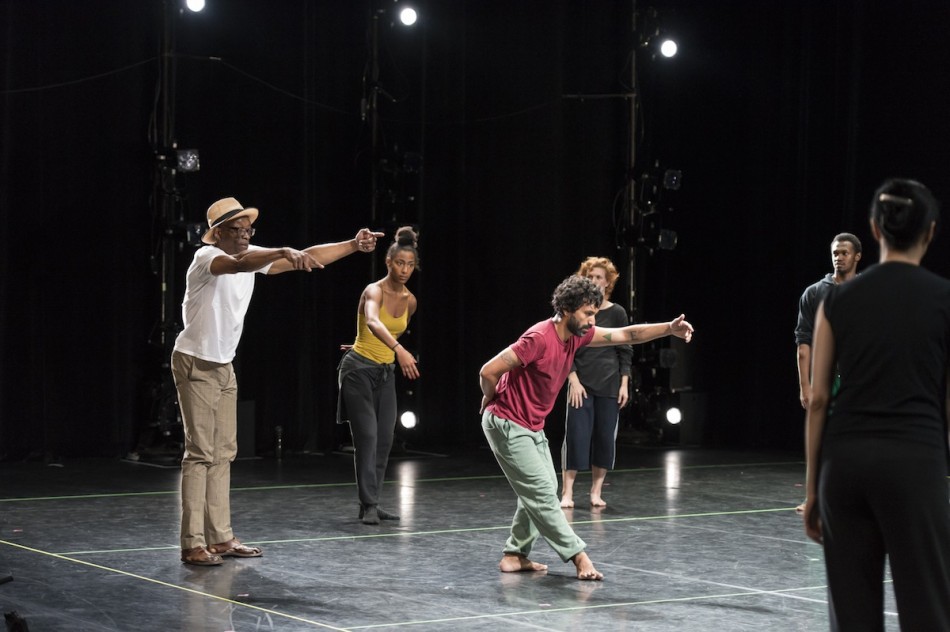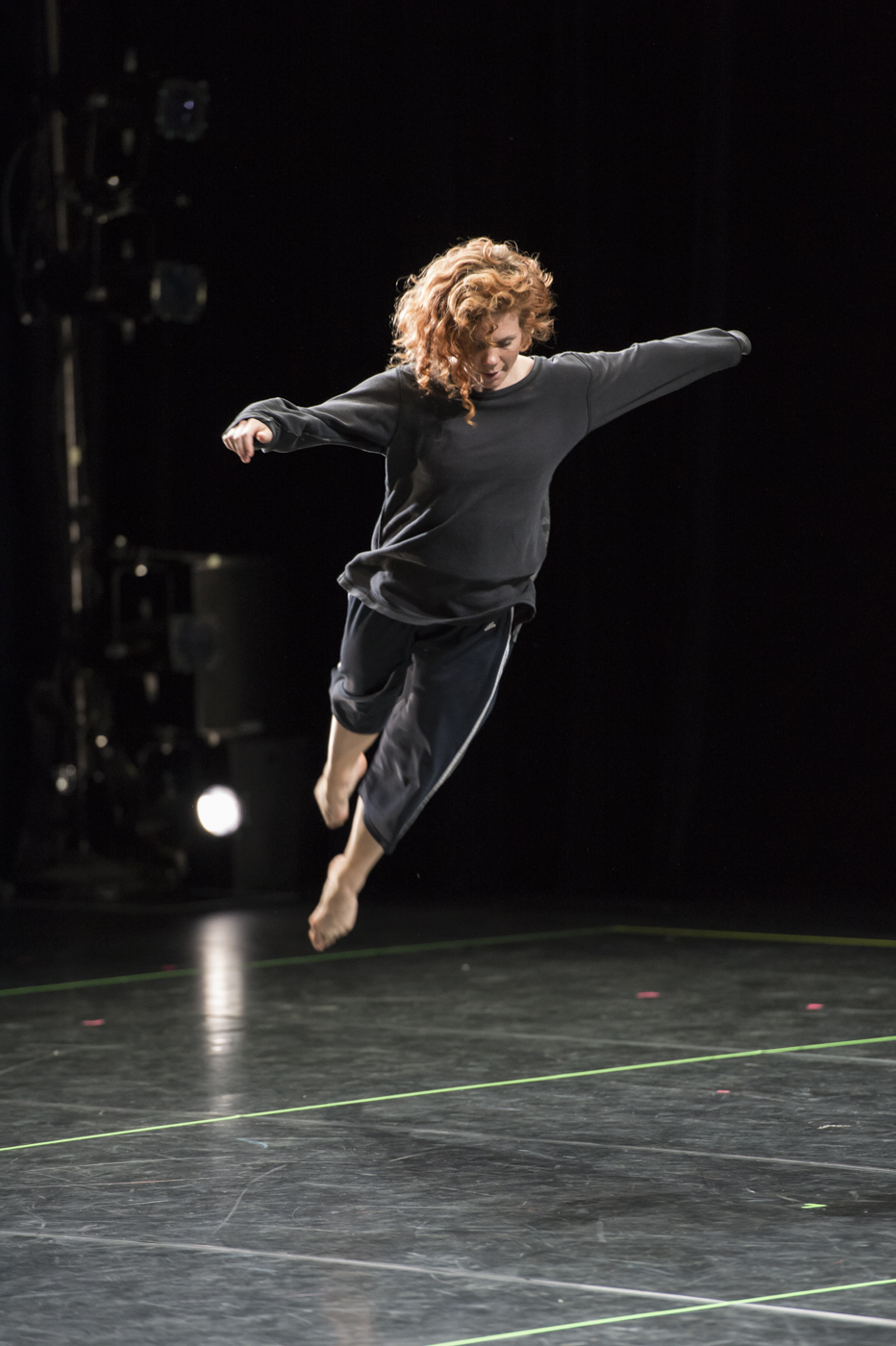
Bill T. Jones directs the dancers in a rehearsal of "Analogy (working title)" during the company's July 2014 residency at Dancers' Workshop in Jackson, Wyoming. Photo: Jeffrey Kaphan
Dancers’ Workshop in Jackson Hole Commissions Work by Bill T. Jones
New York-based choreographer Bill T. Jones remembers what dancers from the Western United States used to say when they came to dance with his company in the 1970s. “They could tell that New Yorkers were tight, and going up, up, up with our bodies,” Jones reflected. “Western people were more expansive.”
Jones immersed himself in that expansiveness for one week this summer when he and his current dance company took up residence at Dancers’ Workshop in Jackson Hole. The recipient of a National Medal of Arts and a MacArthur “genius award,” Jones is known for his highly personal and politically risky productions tackling issues like AIDS, slavery, racism, and now the legacy of World War II. His dances are the stuff of urban grit and painful histories, as well as the resiliency and exuberance of the human spirit.
Dancers’ Workshop, meantime, is a homegrown organization focused on educating dancers and producing performances. Under the leadership of choreographer Babs Case for the past 15 years, Dancers’ Workshop has presented an all-ages winter show for locals, and brought in world-renowned companies such as New York City Ballet, Gallim Dance, Lines Ballet and others.
No stranger to the larger world of modern dance, Case knew she had something unique to offer big city dance companies that they wouldn’t find elsewhere: a high-quality theater in an intimate setting. Dancers’ Workshop is a resident organization at Jackson’s Center for the Arts, which boasts a world-class theater with only 500 seats. Located in a town with abundant natural beauty and donors with deep pockets, arts organizations in Jackson are uniquely poised to work beyond expected small-town limitations.
In offering to co-commission Jones’ latest work, Case teamed up with a former board member of the Bill T. Jones/Arnie Zane Dance Company who has a home in Jackson.
“There aren’t a lot of people supporting the process of creating art,” Case said. “When I told Bill we were interested in co-commissioning work, that’s what got his attention.”
A multi-disciplinary choreographer like Jones needs more than studio space to create new work. His current work in progress, “Analogy” (working title), is drawn from extensive interviews Jones conducted with Dora Amelan, the mother of his partner, Bjorn Amelan. “Analogy” delves into the tenacity of a French Jewish woman who survived World War II and eventually went on to live a rich life with humor and joy. The work involves live music, singing, voice-overs, live reading of text, multiple set pieces and intricate lighting.

Company member Jenna Riegel in rehearsal on stage at the Center for the Arts Theater in Jackson. Photo: Jeffrey Kaphan
“Dance is not unlike architecture,” Case said. “When you build a dance in the studio you have to imagine all the production elements to it and how they will affect or enhance the piece.”
At one point in “Analogy,” the dancers pass around a microphone, speaking fragments of a real conversation between Jones and Dora. “The dancers have to know where they are in space even as they serve her memory,” Jones said. “The audience will see what is present as well as what is more ephemeral.”
Jones says there are numerous themes he wishes to explore in the work. “Action under duress, ethnic origins, courage, lightness of spirit — all of this we are squeezing from Dora’s narrative,” he said.
For Jones, the work involves a delicate balance between universal themes and staying true to the particulars of Dora’s life. “If we are too tight about the specificity then we miss something that is more fascinating,” he said. “Dora is evoking something that transcends our time.”
Case says it is specifics in art that give viewers avenues for feeling. Both she and Jones stress that “Analogy” is not about the Holocaust, but instead about defiance and spirit.
“I feel like I’m always talking over a generational chasm,” Jones said. At 62, he is three or four decades older than his dancers. “Now I am going further away from their experience and bringing in this exotic story of Dora.”
Jones says “Analogy” is “an embodied investigation” in which the company transcends space and time to incorporate Dora’s story into the everyday discourse of a postmodern dance company. Rehearsing eight or more hours a day in the theater, the outdoor surroundings of mountain peaks, national parks, and open tracts of land receded entirely.
Still, in Jones’ mind, the theme of mountains — and what lies beyond them — resonated. Dora once taught Jones the French term, “tramontane,” which he reflected on when he first arrived in Jackson.
“The term means ‘disturbing wind,’” Jones said. “But also, anything from beyond the mountains or elsewhere. Tramontane is one of the things ‘Analogy’ is about.”
